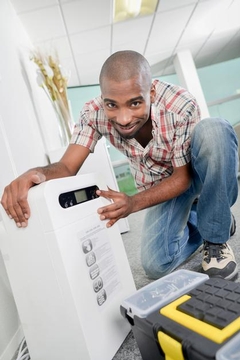
Mold growth is a common issue many homeowners face, often leading to significant health concerns and costly repairs. Did you know that mold can begin to grow within 24 to 48 hours in the right conditions? It's a serious concern that can affect not only the structure of your home but also the health of its inhabitants. Understanding how mold develops and taking proactive measures to prevent it is crucial for every homeowner.
In this blog post, we'll delve into the intricate world of mold: what it is, how it grows, and most importantly, strategies to prevent it in your home. We'll explore practical, budget-friendly damage restoration tips designed to keep your home safe and mold-free.
Whether you're dealing with a current mold issue or simply looking to safeguard your home, Dri Pro Restoration, your trusted damage restoration company in Pensacola, FL, is here to help you every step of the way with expert advice and services.
What is Mold and Why is it a Concern?
Mold is a type of fungus that thrives in moist, warm environments. It reproduces by creating tiny spores that are invisible to the naked eye and travel through the air. While mold plays a crucial role in breaking down organic materials in nature, indoor mold can be hazardous to health and home alike.
Mold exposure can lead to various health issues, such as respiratory problems, allergies, and in severe cases, mold toxicity. The structural integrity of your home can also suffer, as mold can damage building materials like wood and drywall.
How Mold Growth Occurs
Understanding the conditions conducive to mold growth is vital to preventing it. Mold typically requires the following to thrive:
- Moisture: Leaks, floods, and high humidity levels can create the perfect breeding ground for mold.
- Warmth: Mold generally thrives at temperatures between 60 and 80 degrees Fahrenheit.
- Organic Material: Mold feeds on materials like wood, paper, and fabric.
Learn more about mold in this reference from the CDC.
When these elements align, mold can grow rapidly, often without initial visible signs. Key areas prone to mold growth include bathrooms, kitchens, basements, and areas around leaking pipes or windows.
The Domino Effect: Cause and Consequence
A small leak in your roof may not seem like an immediate concern, but left unattended, it can lead to significant mold problems. For example, when water seeps into the attic insulation, it creates a hotbed for mold spores. The mold weakens the insulation, spreads to the ceiling beams, and can potentially compromise the roof's structural integrity. This is just one example of how minor moisture issues can evolve into extensive mold-related damage.
Preventing Mold in Your Home
Preventive measures are your first and most effective line of defense against mold. Here’s what you can do:
1. Control Moisture
- Fix Leaks Immediately: Inspect for leaks in roofs, pipes, and windows, and make repairs without delay.
- Proper Ventilation: Ensure bathrooms, laundry rooms, and kitchens are well-ventilated. Use exhaust fans or open windows to reduce humidity.
- Use Dehumidifiers: In areas prone to moisture buildup, use dehumidifiers to maintain indoor humidity levels below 60%.
2. Conduct Regular Inspections
Routine checks around your home can nip potential mold problems in the bud. During your inspections, pay close attention to:
- Basements and Crawl Spaces: Monitor these areas for signs of dampness or leaks.
- Hidden Areas: Check behind furniture, curtains, and around water fixtures for hidden mold.
3. Utilize Mold-Resistant Products
- Mold-Resistant Materials: Opt for mold-resistant drywall and paints, especially in moisture-prone areas.
- Sealing and Waterproofing: Seal foundation cracks and apply waterproof coatings to prevent water infiltration.
4. Maintain Your HVAC System
Your heating, ventilation, and air conditioning (HVAC) system can harbor mold if not properly maintained. Regular servicing and filter replacement help ensure the system is free of mold-inducing moisture and dust.
Top Tips from Industry Experts
Experts in mold remediation services in Pensacola, such as those at Dri Pro Restoration, advocate for proactive prevention rather than reactive remediation.
- Educate Yourself: By understanding the conditions that promote mold growth, you can take swift action to prevent it.
- Seek Professional Assessments: If you suspect mold, consider hiring professionals like Dri Pro Restoration for a thorough assessment and remediation plan.
Prevent Mold Before It Starts with Expert Help from Dri Pro Restoration
Mold growth is a common but manageable concern for homeowners. By controlling moisture, conducting regular inspections, and utilizing mold-resistant products, you can safeguard your health and home. Armed with the knowledge and tips provided in this post, you’re now better prepared to prevent mold-related issues.
By learning how to prevent mold effectively, you're not only protecting your home investment but also ensuring a healthier living environment for you and your family.
If you’re dealing with mold or have concerns about potential mold growth, don’t hesitate to reach out to Dri Pro Restoration for expert guidance and solutions. Contact us today to learn more about our comprehensive mold damage restoration services.